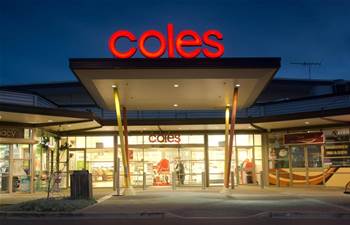Coles Group’s smarter selling program delivered over $100 million in benefits over the six months to January 3, allowing the retailer to reinvest in IT, digital and other strategic projects.
Smarter selling is Coles' transformation strategy implemented in 2019 that is intended to cut $1 billion in costs from the retailer’s business spending.
In its first half results for 2022, Coles reported that alongside savings, it now expects to realise an additional $200 million in benefits by the end of FY22, with total cumulative benefits reaching over $750 million since the program began.
Key benefits realised over the half were delivered through the use of artificial intelligence rto reduce dairy product waste, e-commerce efficiencies enabled through the use of new fraud detection tools, and logistics.
Coles CEO Steven Cain told investors the “smarter selling program is on target to deliver $1 billion of savings by FY23.”
“What these results show is that our strategy is beginning to differentiate us from our competitors,” he said.
Automated fulfilment
Coles also invested around $20 million in OpEx into its two Ocado-powered online customer fulfilment centres and Witron-powered automated distribution centre.
Cain said he is “delighted that our first Witron automated DC will open in Queensland next year, which will further increase our efficiencies.”
The Sydney Ocado centre will open as planned and be “the first [of its kind] in the southern hemisphere”.
Construction on the Ocado Melbourne centre has been pushed back to FY24 instead of 2023 as initially planned.
Coles’ gross operating capital expenditure dropped by $114 million to $418 million over the half due to the Witron and Ocado project and pandemic-related construction delays.
E-commerce numbers
Cain said “one of the operational highlights” over the half was “supermarkets and liquor e-commerce growth [at] 46 percent and 60 percent respectively, as we invest in capacity and the customer experience.”
“Total e-commerce sales in calendar year 2021 were approximately $2.6 billion," he said, adding that digital monthly shopper numbers were up 44 percent.
The increases were attributed to investments in the customer experience, including the launch of a unified app and extended Coles Plus member benefits.
Coles continued to build out click and collect and same day home delivery capabilities during the half.
Cain added that in the three months to December 31, "omnichannel customers spent more than two times that of in-store only shopper”.
Coles reported net profit after tax (NPAT) of $549 million, up 20 percent from the prior corresponding year. Total sales revenue was $20.6 billion, up 9.2 percent from the first half 2020.


























